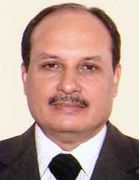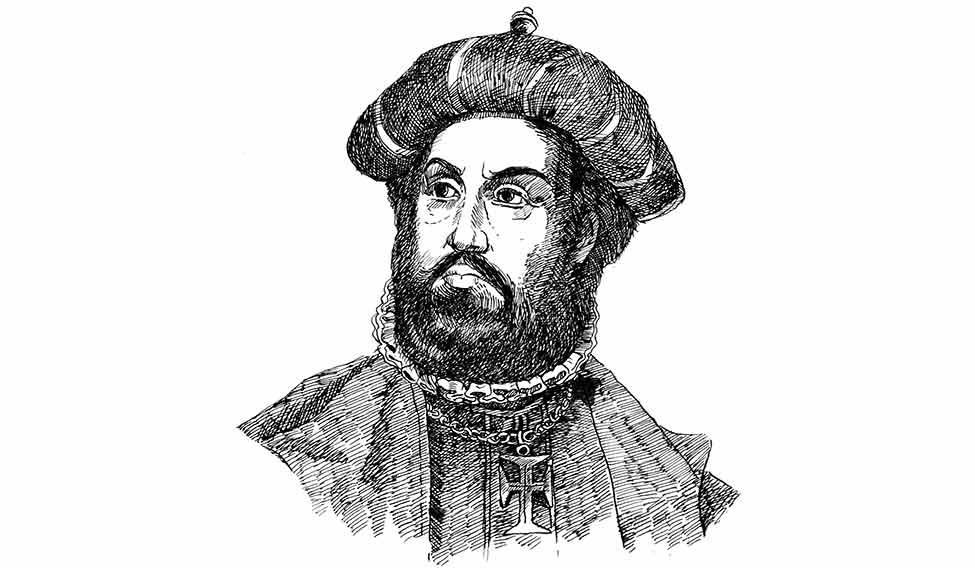
Vasco da Gama is known as the hero of the age of discoveries, the European historical era from the 15th to 18th centuries. He discovered a new sea route from Europe to the far east around the Cape of Good Hope on the southern tip of Africa. Gama started from Lisbon in 1497 and reached Panthalayani Kollam, a port on the Malabar coast near Calicut, after sailing for ten and a half months.
According to Adam Smith, “the two greatest incidents in world history” are the discovery of America by Columbus and the finding of the new sea route to India by Gama. Historians describe Gama’s arrival as an entente cordial that allowed the east and the west to meet without an intermediary.
Gama was born in 1460 as the third son of Estêvão da Gama, a minor provincial nobleman, who was commander of the fortress of Sines, a coastal town in Alentejo province in southwestern Portugal. The Portuguese kings at the time were in search of newer options to build up the royal treasury in order to reduce their dependence on the feudal nobility. Spice trade with the east was one of their prime targets. Several expeditions were mounted to open up a new route to the east, and Gama, with his proven seafaring capability, was among the chosen ones to lead one of those.
He set sail from Lisbon on July 8, 1497, and braving several hardships, managed to reach the Malabar coast on May 20, 1498. With his voyage, Gama showed the western world the immense possibilities of trade with the east. The occupation of Constantinople by the Ottoman Turks in 1453 had shut the European trade routes to India. Pepper and other spices were denied to the Europeans by the Arabs. Gama’s new route opened up a wide range of possibilities. It helped the Portuguese avoid the Mediterranean, the Persian Gulf and the Arabian peninsula and ensure monopoly over the lucrative spice trade. The next three centuries, however, were noted for the struggle among the Europeans for the monopoly of spice trade with India, especially Malabar, which was known as the “land of pepper”
Gama's discovery heralded a new age of European imperialism in Asia. Starting with spices like pepper and cinnamon, the Portuguese traders gradually diversified into other products, cementing a commercial monopoly. It helped the Portuguese rulers revive their economy, which until then relied heavily on trade with coastal Africa. The new sea route was a beginning. The spice growers got good prices, cultivation was increased and hinterland navigation and trade improved.
By cleverly mixing politics and war, Gama kept the Portuguese flag flying in India, and, in the process, ensured his country's supremacy in maritime trade. He showed the importance of establishing secure outposts on the eastern coast of Africa along the trade routes to the east. Gama’s voyage made an indelible mark not just on Malabar. It created far-reaching changes in the commercial, agricultural, political, religious and social arena of a number of countries in the east.
Apart from laying the foundation for Portuguese imperialism, Gama's voyage also marked the beginning of global multiculturalism. Homages have been paid worldwide to celebrate his accomplishments. The Portuguese national epic, Os Lusíadas, was written in his honour by Luís Vaz de Camões. The port city of Vasco da Gama in Goa is named after him. Three football clubs in Brazil, including Club de Regatas Vasco da Gama, and Vasco Sports Club in Goa are named after him. A church in Kochi, Kerala, and a private residence on the island of Saint Helena bear Gama's name. The suburb of Vasco in Cape Town, South Africa is named after him. A few places in Lisbon's Parque das Nações, such as the Vasco da Gama Bridge, Vasco da Gama Tower and the Centro Comercial Vasco da Gama shopping centre, too, are named in his honour.
“Portugal’s navigators, showing Europe the way across the oceans, brought back more than spices, gold, precious stones and silk,” said Mario Soares, former president of Portugal. “They interacted with ancient cultures and gave us the vision of the one world we have today.” Whether some people like it or not, Gama enjoys a prominent position in history as the man who led the expedition that connected the western world to the east.
Charles Dias is a former MP, vice president of the Kerala History Association, and director of the Indo-Portuguese Cultural Centre
Faxian
Pilgrim's progress
Faxian was the first Chinese pilgrim scholar to leave an account, A Record of Buddhistic Kingdoms, of his travels to India and Sri Lanka. He set out from China in 399 CE in search of the authentic Buddhist canon and travelled extensively in the “holy land” of Buddhism. He visited the important places in the Buddha’s life, including Kapilavastu, Sarnath, Bodh Gaya and Kushinagar. He was so impressed by what he saw and said India was very productive and the people were happy beyond compare. His journey inspired many Chinese scholars to travel to India in search of scholarly texts and the ultimate truth. He also spent two years in Sri Lanka and collected Buddhist texts to take back home. While returning from Sri Lanka, Faxian’s boat ran into rough weather and he spent about 200 days stranded at sea. Faxian’s accounts helped start relations between India and China and contain exclusive information on Indian Buddhism. He returned to China with many Sanskrit texts and translated them to strengthen the foundation of Buddhism in the country.





